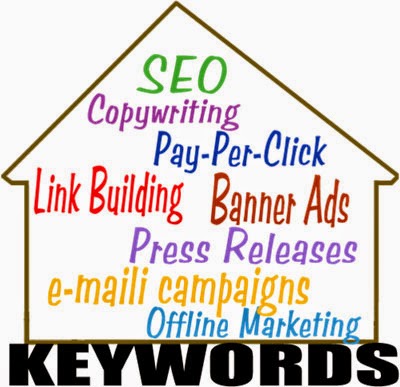Why are B2C and B2B Sales so Different
This is the first article from a series about B2B sales. I decided to invest time in writing about it because:
1. Selling something not so expensive to a direct customer needs very different skills than selling something in the hundreds of thousands to a corporation
2. I want to help fellow B2B salespeople avoid some of the mistakes I made
2. I want to help fellow B2B salespeople avoid some of the mistakes I made
On a side note, I believe in understanding someone needs and offer help only if one can add real value, instead of trying to close a sale at any cost.
All of the things I’ll share are based on personal experience and on a book called “SPIN Selling” by Neil Rackham. If you haven’t read it yet and you’re a B2B sales professional it’s a must read.
Why are B2C and B2B sales so different?
Think about how many times you’ve been sold something that doesn’t cost much so that later to find out that this purchase was completely unnecessary. Then, you either give the purchase to someone or throw it in the attic. Do you remember why you bought it at first place? Was it because you liked the seller? Was it because you were in a good mood or it was because it cost just $10 and you didn’t think much about it?
Now think about the moment you realized the purchase was useless. What were your thoughts? Were they like:
Now think about the moment you realized the purchase was useless. What were your thoughts? Were they like:
● OK. I gave just $10.
● I’ll give it to someone else who needs it or
● I’ll just throw it in the attic
● I’ll give it to someone else who needs it or
● I’ll just throw it in the attic
It’s that simple when you make a cheap, unnecessary, useless purchase. The consequences of the mistake are relatively small (none).
However, put yourself in the shoes of the VP of Engineering of a major corporation who just bought a new cloud platform that costs north of $50,000 per month. Suddenly, the VP realizes this is a bad purchase. Can he just throw it in the attic or give the cloud platform to a friend? Will he be the only one knowing about this purchase? No, of course. Now you get it!
However, put yourself in the shoes of the VP of Engineering of a major corporation who just bought a new cloud platform that costs north of $50,000 per month. Suddenly, the VP realizes this is a bad purchase. Can he just throw it in the attic or give the cloud platform to a friend? Will he be the only one knowing about this purchase? No, of course. Now you get it!
In summary, the main characteristics of B2C and B2B sales:
1. B2C sales are:
● B2C sales are mostly in the lower amounts, meaning cost is low. Value is also low. Thus, customers can decide to buy just based on emotions
● When one buys something worth $10 and later realizes that it’s useless, it’s no bother
● Most of the times the buying decision impacts no one but the buyer
● Most of the times buyer is the only person knowing about the purchase
● The buyer can throw the purchase in the cellar or the attic if useless
● When one buys something worth $10 and later realizes that it’s useless, it’s no bother
● Most of the times the buying decision impacts no one but the buyer
● Most of the times buyer is the only person knowing about the purchase
● The buyer can throw the purchase in the cellar or the attic if useless
2. B2B sales are:
● B2B sales are mostly about high amounts thus the buyer can’t buy on pure emotion
● The decision maker thinks about what will happen if the purchase turns useless as it will impact the work of many other people
● Visible. Fear of making public mistake is the biggest factor that increases caution in the buyer.
● If useless, the buyer can’t simply throw the purchase in the attic
● The decision maker thinks about what will happen if the purchase turns useless as it will impact the work of many other people
● Visible. Fear of making public mistake is the biggest factor that increases caution in the buyer.
● If useless, the buyer can’t simply throw the purchase in the attic
Let me finish the article with two examples based on my experience:
1. The first example is from my childhood. Every morning during the summer time, my brother, our best friend and I were going to the neighborhood next to ours, to pick up flowers which we were later selling in front of our house. The money was immediately spent on candies and other similar things. However, what I remember most vividly is that whoever was buying from us was always saying something like – “What charming kids. Let me buy some flowers from you.” 90% of the buyers were buying based on emotions not because they needed flowers. Do you think this would happen if we were selling the flowers for $100 each? I don’t think so!
2. The second story is from the beginning of 2015 which actually started in March 2014. It’s the story of how we started a partnership with a company in San Francisco named RGB Spectrum. The first time I met with their COO Scott was back in 2014 in their Alameda office. Nine months, 3 face to face meetings and 10 Skype calls later, we started working together. It wasn’t just because the initial amount of the deal was above $50,000 but it was because we had to build trust with each other, develop needs, involve other people from RGB and Dreamix, and then start a partnership. Not close a sale but open a relationship. Here’s the reference from Lynton their VP of Engineer – remember I first met with the COO? 
“Dreamix recently developed a project for RGB Spectrum which has been integrated into one of our regular product offerings. The Dreamix team was very capable, focused and helpful for the duration of the project, despite getting less support than they deserved during the project. Instead of just writing about how I would recommend Dreamix, I will illustrate it by noting that I have just launched another project with them.”
Read More Here =>> https://goo.gl/bNDy2Q






Комментарии